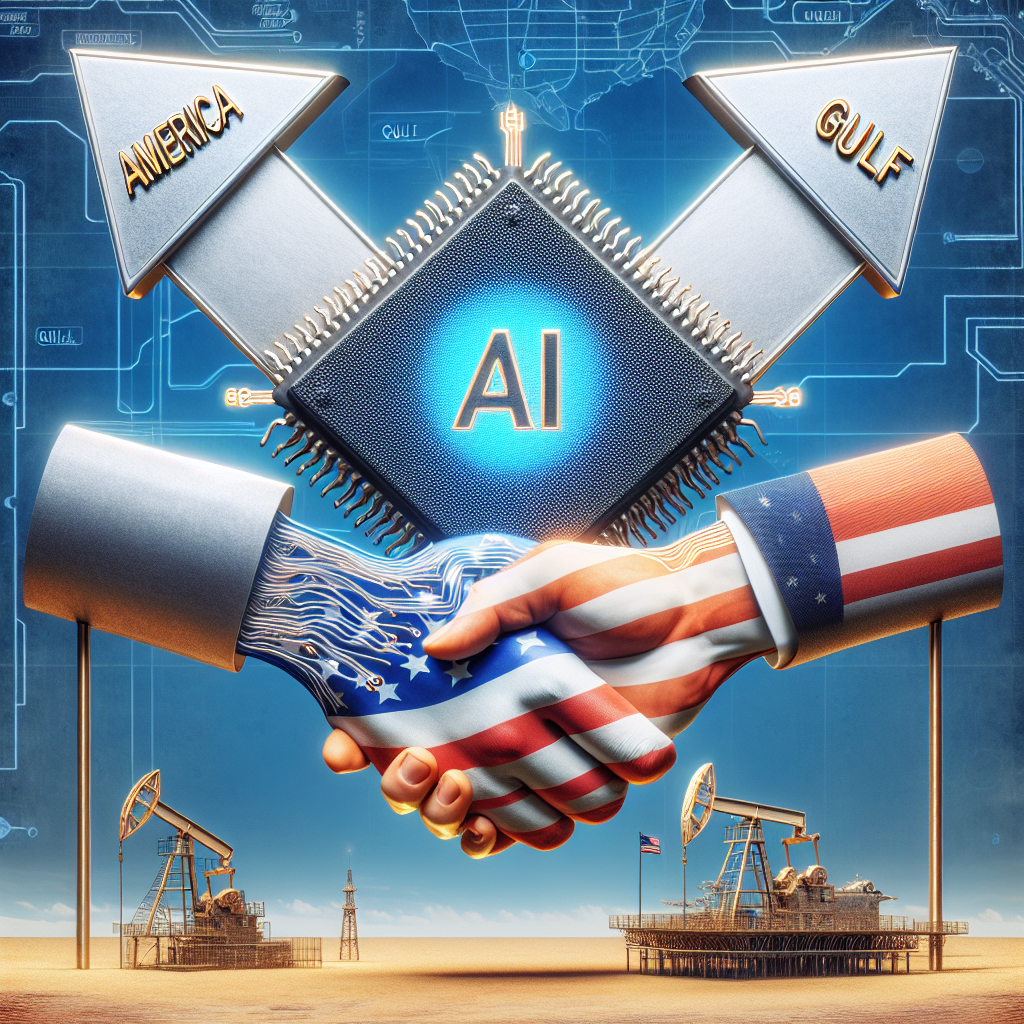America’s Strategic Turn Toward AI Collaboration with the Gulf
The geopolitical sands of the Middle East are shifting—this time, not only through pipelines or oil shipments, but through algorithms and artificial intelligence (AI). The United States, under the Trump administration, has undergone a significant pivot toward AI partnerships with key Gulf nations: Saudi Arabia and the United Arab Emirates (UAE). This shift underscores how tech diplomacy is fast becoming as critical as military alliances and energy trade in shaping international relations.
AI Becomes the New Front in U.S. Foreign Policy
Artificial intelligence is no longer the exclusive domain of Silicon Valley or research labs; it has evolved into a cornerstone of national security, economic resilience, and global influence. Recognizing this, the Trump administration began intensifying cooperation with Gulf partners whose financial clout and strategic positioning offer new opportunities in AI development.
Countries such as Saudi Arabia and the UAE are no longer passive recipients of Western technology—they are actively investing in, developing, and deploying AI for both civilian and defense purposes. The U.S. sees this technological enthusiasm as fertile ground for deepening strategic ties.
Why the Gulf Matters in the AI Race
The Gulf states have emerged as natural partners in America’s AI ambitions for several reasons:
- Wealth and Investment: Both the UAE and Saudi Arabia possess sovereign wealth funds capable of supporting large-scale, long-term tech initiatives. Examples include Saudi’s Vision 2030 plan and the UAE’s National AI Strategy 2031.
- Strategic Geography: The region functions as a logistical and geopolitical gateway connecting Europe, Asia, and Africa—vital for securing U.S. tech and trade routes.
- Authoritarian Efficiency: Centralized decision-making in these monarchies allows for the rapid implementation of nationwide AI projects—something difficult to replicate in Western democracies.
The Backbone of Partnership: Data, Infrastructure, and Talent
At the heart of the AI partnership between the United States and the Gulf is an ecosystem built on digital infrastructure, data exchange, and talent development. Mega-projects like Saudi Arabia’s NEOM—a $500 billion smart city—are attracting American tech corporations, startups, and research institutes alike.
Furthermore, the UAE has appointed a Minister of Artificial Intelligence and launched initiatives to embed AI into sectors like healthcare, security, and urban mobility, increasingly looking westward for technical expertise and innovation.
American Tech Giants Lead the Charge
Major U.S. firms such as Microsoft, Google, and Oracle have partnered with Gulf governments or state-owned enterprises to provide cloud services, machine learning platforms, and cybersecurity tools. These collaborations often expand beyond infrastructure to include ethics frameworks, workforce training, and joint R&D programs.
The Risks of Technological Interdependence
While America’s AI pivot to the Gulf promises long-term strategic advantages, it is not without challenges.
1. Technology Transfer and Security Risks
The deep integration of American technology into the cyber fabric of authoritarian regimes poses critical security questions. Should political allegiances shift, the U.S. risks losing control or oversight of advanced systems that could be exploited for malicious purposes.
2. Ethical Dissonance and Surveillance Concerns
Gulf nations have drawn criticism for state surveillance and limited civil liberties. Critics argue that U.S. AI exports could be used to enhance domestic political repression, risking America’s reputation as a champion of digital rights and open governance.
3. Dependence on Political Stability in the Region
Events such as leadership changes, regional conflicts, or public unrest could upend years of planned cooperation. Building robust AI ecosystems demands long-term predictability—something still elusive in the complex Gulf political landscape.
The Road Ahead: Balancing Opportunity with Caution
The United States’ AI pivot to the Gulf reflects a strategic recognition that technological supremacy cannot be pursued in isolation. These partnerships offer a pathway to counter Chinese and Russian influence, fuel innovation, and secure critical infrastructure in a volatile region.
However, Washington must walk a tightrope. The challenge lies in balancing national interests with moral leadership, ensuring that AI does not become a tool for oppression. Active oversight mechanisms, transparent partnerships, and value-based diplomacy should underpin this high-stakes technological courtship.
Conclusion
In a world where digital capabilities increasingly define global power, America’s outreach to the Gulf has become an essential component of its AI strategy. By weaving AI into its foreign policy fabric, the United States is betting that innovation + influence equals security. The results of this gamble, however, will depend not just on mutual interest—but on mutual responsibility.
As the future unfolds, all eyes will be on whether this partnership can deliver not just contracts and code, but a new model for responsible AI leadership in a multipolar world.



Leave a Reply